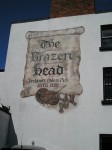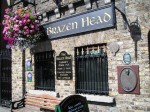So my name is Brendan McCollam, I just graduted from Pomona College in Claremont, CA where I was a neuroscience major.
I received a Watson Fellowship, which provides a $25,000 grant to travel and complete an independent project. My project involves traveling to the Netherlands, Germany, France, Slovenia, Croatia, Argentina, Chile, and Mexico investigating the free software movement and hacktivism. If you’re interested, you can read the personal statement and project proposal I submitted to the Watson Foundation which awards the grants.
This blog will be a record of my travels, with photos and stories and such; I also intend to write about timely issues in software/technology/politics. I imagine the majority of readers will be my friends, family, and perhaps people connected with the Watson foundation, but anyone else is welcome as well.
I’m leaving in a few hours, and I still have a bunch of packing to do. It’s a strange and oddly liberating feeling to have only the vaguest notion of where I’m sleeping tonight.
Thanks for reading.


